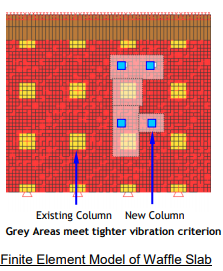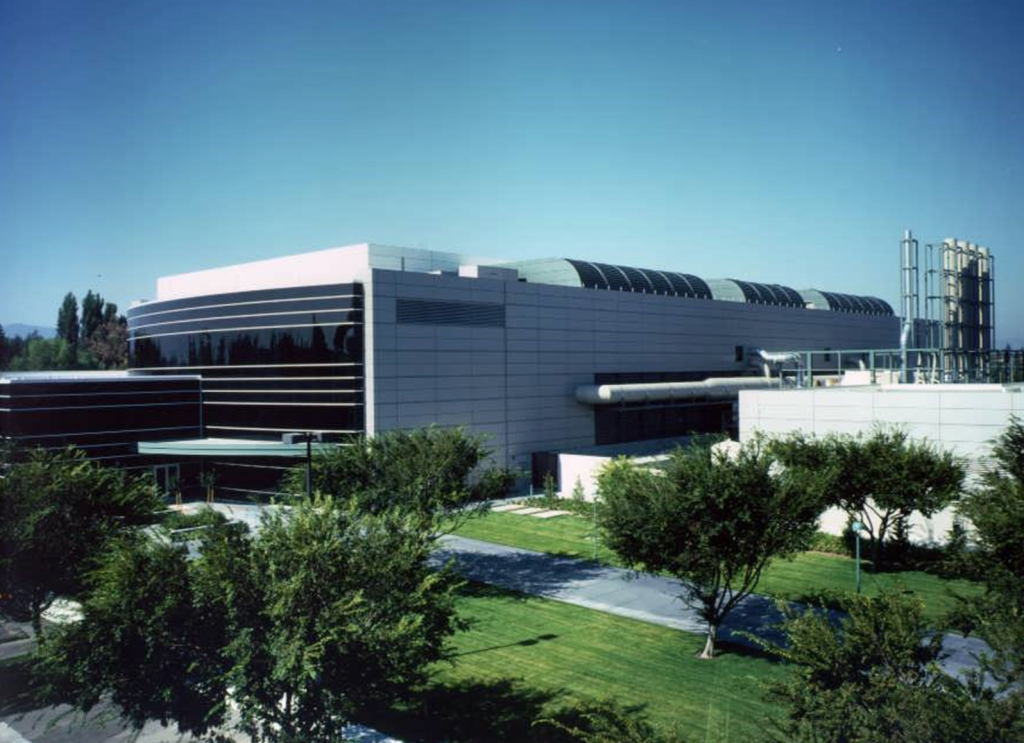Structural Dynamics & Finite Element Analysis
Applied Materials is a major supplier of process equipment to semiconductor manufacturers worldwide. With manufacturing and demonstration space spread across several campuses in Silicon Valley, AMAT provides tools for Etch, Deposition, Implantation, CMP, and metrology. Building 81 at the AMAT Arques Campus in Sunnyvale was retrofitted in an effort to increase available tool demonstration space. High-end metrology tools (SEMs) were required for support of the demonstration efforts. Since the existing process floor at Building 81 was not designed to meet the more demanding vibration criteria of these tools, a structural retrofit was required.

The existing process floor was a waffle floor with long column spans. Deepening the floor was not an option; however, it was possible to add columns. Since only a few sensitive tools would be present, and in order to preserve space in the subfab, we proposed that columns be added only where sensitive tools would be located. AMAT agreed that maintaining flexibility and space in the subfab – in addition to the low cost of the retrofit – made this an attractive option.
We implemented a 3-D finite element model of the facility. Knowing where the sensitive tools would be located, as well as the layout of new and existing support equipment in the subfab, we identified the most efficient locations for the new columns. We devised a screwjacking method making the installation of the new columns as quick and simple as possible.
In addition to the structural retrofit for vibration control, attention was paid to noise control within the facility. Because new office/laboratory space was planned over and adjacent to a tunnel from major mechanical spaces, special noise control design was necessary. The tunnel was sealed in two places to prevent noise impact on quiet office spaces from the purge cycle of existing CDA dryers.
Our design input included vibration and noise consulting at the Schematic Design phase, continuing through Design Development and Construction Administration. Various in-situ tests of the structural properties were performed to characterize the original structure in order to inform the retrofit design. Other tests included ambient vibration tests and characterizations of noise generated by major mechanical systems, such as CDA dryers and DI water pumps.









